The Economics and Statistics Division maintains archives of previous publications for accountability purposes, but makes no updates to keep these documents current with the latest data revisions from Statistics Canada. As a result, information in older documents may not be accurate. Please exercise caution when referring to older documents. For the latest information and historical data, please contact the individual listed to the right.
<--- Return to Archive
For additional information relating to this article, please contact:
April 27, 2022CENSUS POPULATION BY AGE AND GENDER, 2016 & 2021 Today, Statistics Canada released the second series of results from the 2021 Census, providing information on the age structure of the Canadian population and the types of dwelling in which Canadians live.
Statistics Canada noted that more than 1 in 5 (21.8%) persons of working age are aged 55 to 64 – an all time high in the history of Canadian censuses. From 2016 to 2021, the number of persons aged 65 and older rose 18.3% to 7.0 million. This is the second-largest increase in 75 years, after the one observed from 2011 to 2016 (+20.0%).

In Nova Scotia, population aged 15 to 64 increased 1.9% from 2016 to 2021 while their share in total population declined from 65.6% to 63.7% over the same period. Nova Scotia’s population aged 65 years and older increased 17.1% from 2016 to 2021 and accounted for 22.2% of total population in 2021, up from 19.9% in 2016.

Nationally, median age increased from 41.2 in 2016 to 41.6 in 2021. Nova Scotia’s median age remained unchanged at 45.6 years old over the last five years. Across provinces, Newfoundland and Labrador had the highest median age at 48.4 years old in 2021 while Manitoba and Alberta had the youngest median age both at 38.4 years old.
Age cohorts
Looking at the distribution of population across age groups and sexes, Halifax saw a population increase in the ages between 25 to 40 while population aged 40 to 60 reported a decline from 2016 to 2021. The distribution is similar between males and females.
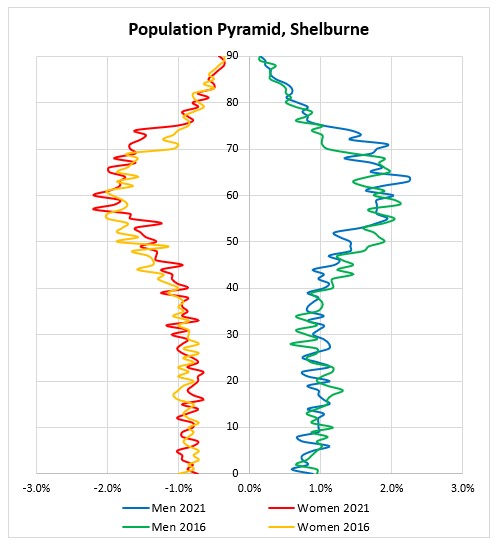
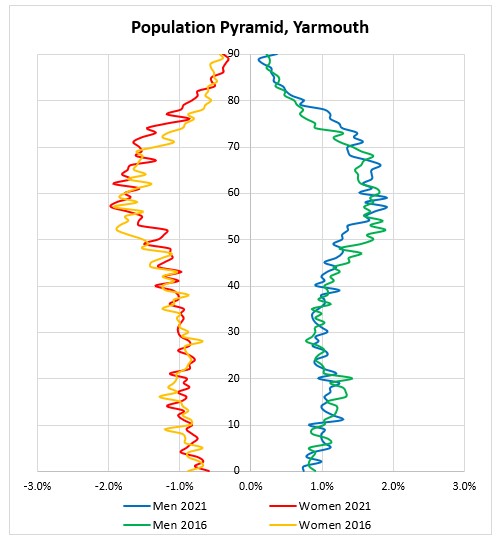
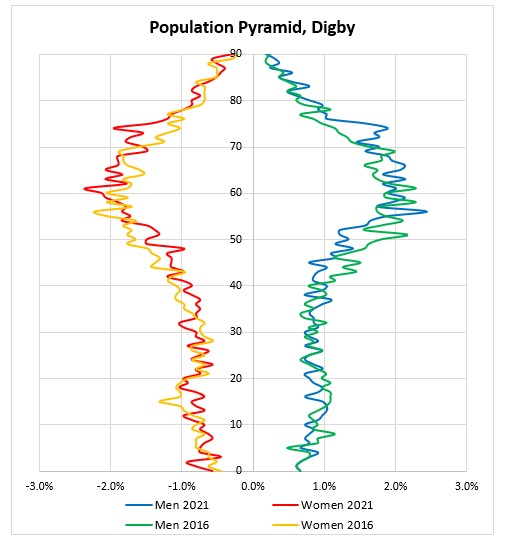
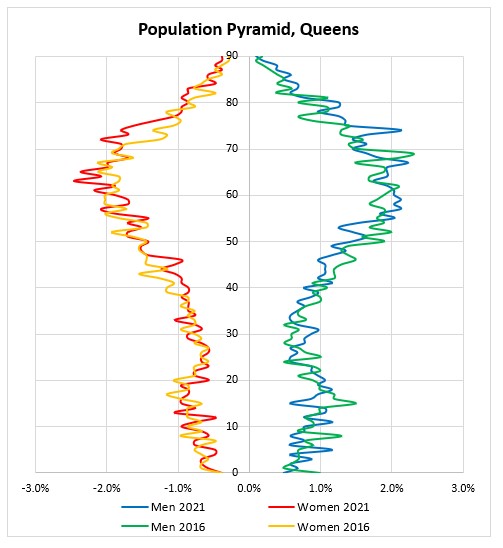
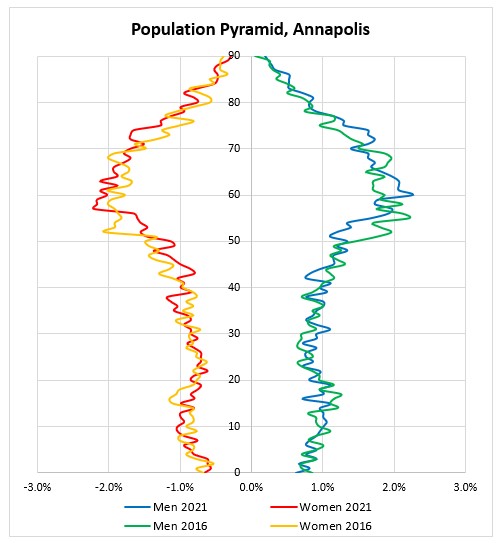
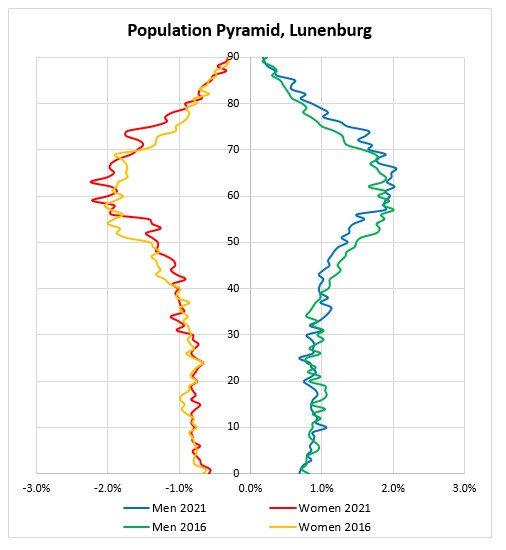
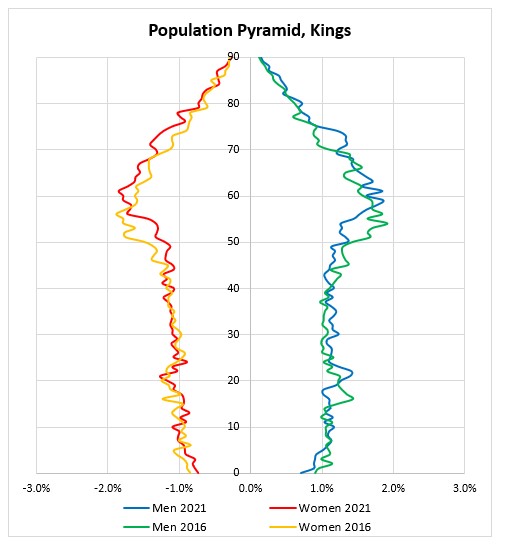
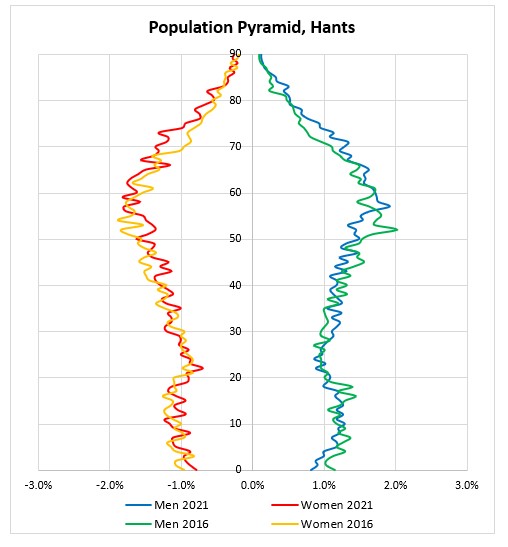
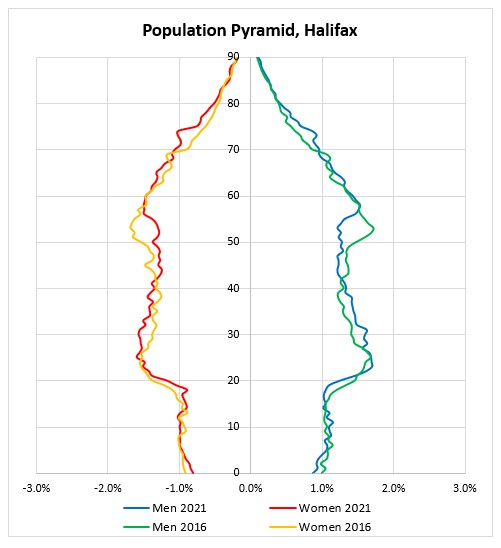
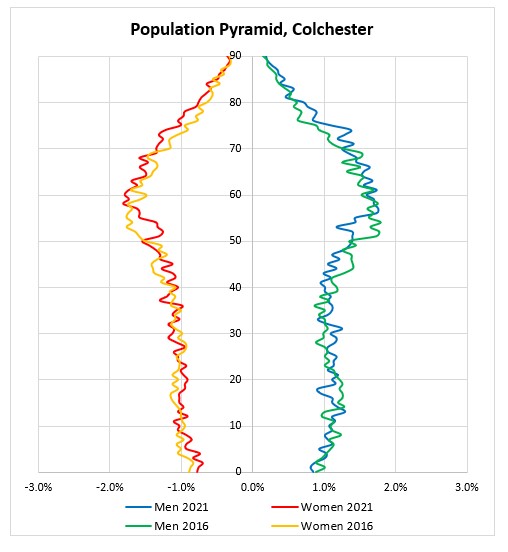
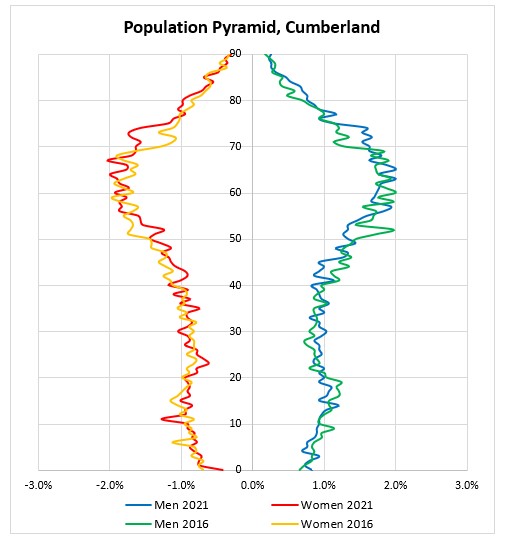
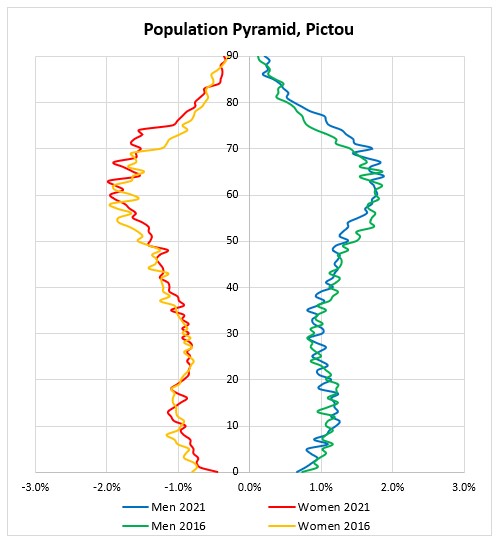
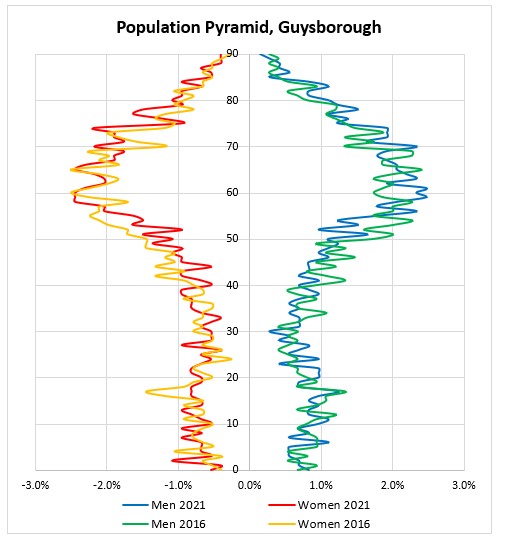
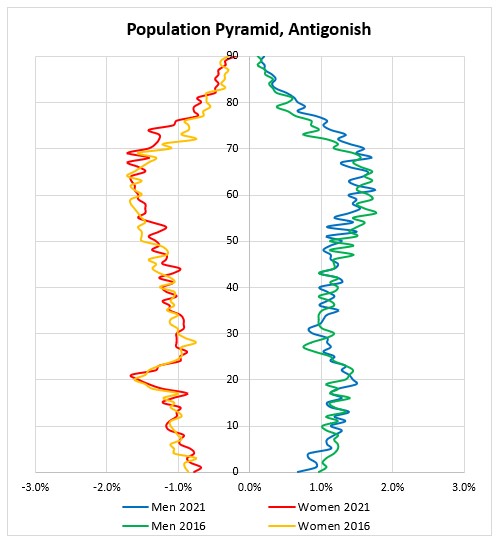
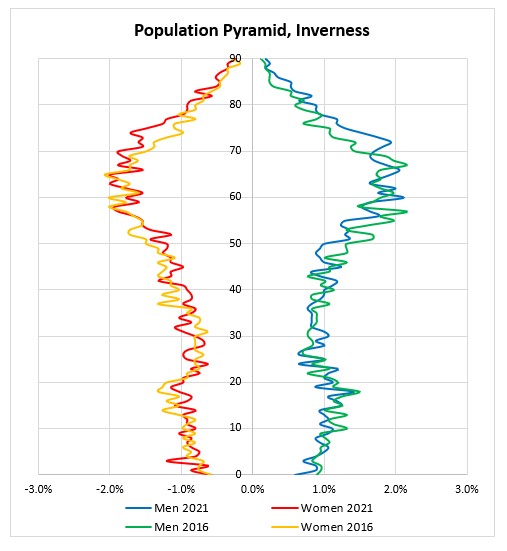
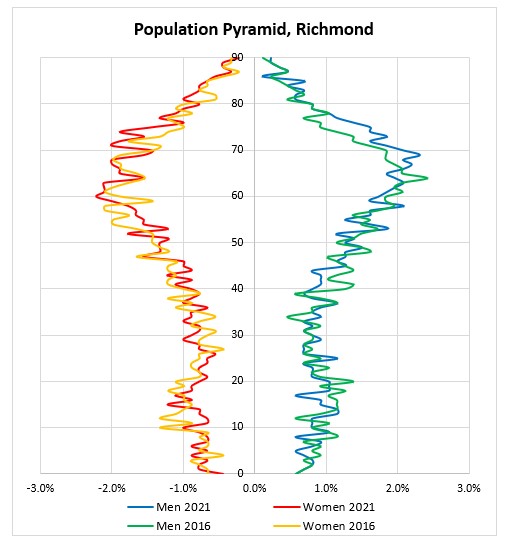
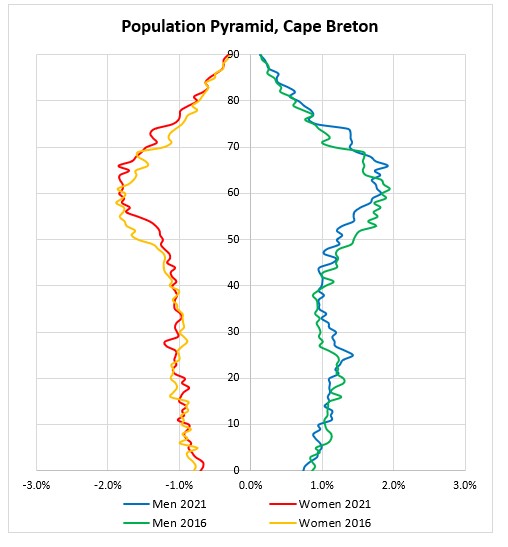

Gender Diversity
Beginning in 2021, the precision of "at birth" was added to the sex question on the census questionnaire, and a new question on gender was included. As a result, the historical continuity of information on sex was maintained while allowing all cisgender, transgender and non-binary individuals to report their gender.
Of the nearly 30.5 million people in Canada aged 15 and older living in a private household in May 2021, 100,815 were transgender (59,460) or non-binary (41,355), accounting for 0.33% of the population in this age group. In May 2021, the Canadian population aged 15 and older had an average age of 48.0 years. In comparison, the transgender population had an average age of 39.4 years, while the non-binary population had an average age of 30.4 years.
Nova Scotia (0.48%), Yukon (0.47%) and British Columbia (0.44%) had the highest proportions of transgender and non-binary people aged 15 and older among provinces and territories.
In 2021, there were 3,940 people in Nova Scotia who were transgender and non-binary.

Source: Statistics Canada, Table 98-10-0022-01 Age (in single years), average age and median age and gender: Canada, provinces and territories, census divisions and census subdivisions, Table 98-10-0036-01 Broad age groups and gender: Canada, provinces and territories
<--- Return to Archive